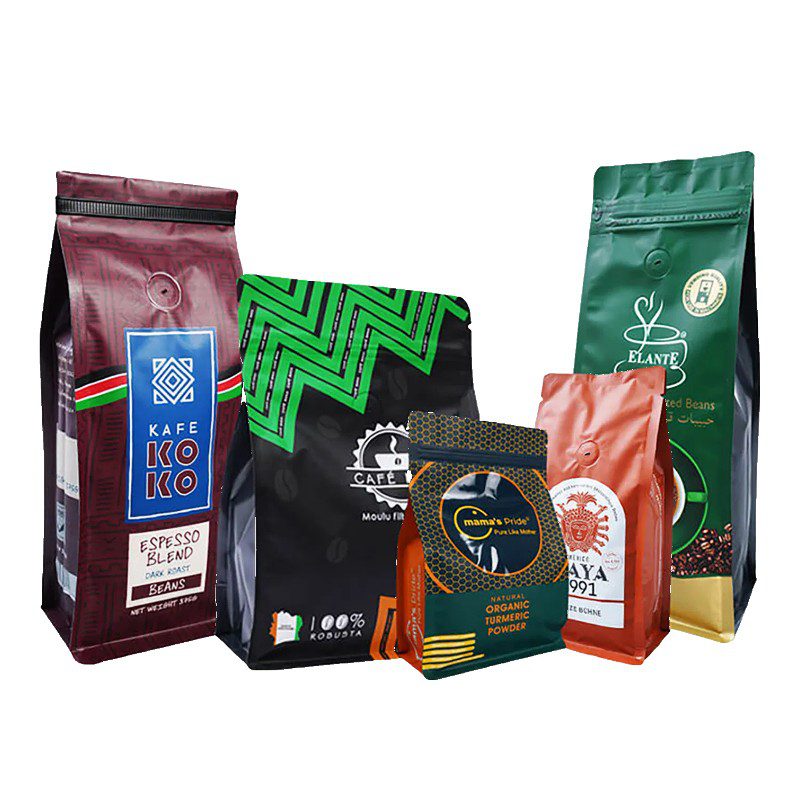What does it take to make coffee bags?

Coffee Bag
Hebei Xiongan Plante Material Co., Ltd- For Customers
1. Material and Structure
Coffee packaging bags are usually made of multiple layers to ensure the quality and freshness of the coffee. The outermost layer is often a sturdy material.
For example, kraft paper is a popular choice. It provides good physical protection, preventing the coffee bean from being damaged during transportation and storage. The kraft paper gives the bag a natural and rustic look, and it’s also environmentally friendly.
Many coffee bags have a middle layer that consists of a barrier material such as aluminum foil. The aluminum foil layer is excellent at blocking out light, oxygen, and moisture. Light can cause the coffee to deteriorate by triggering chemical reactions that affect the flavor. Oxygen can oxidize the coffee beans, leading to taste bad. And moisture can cause mold growth or change the texture of the coffee.
The innermost layer is typically a food – grade. This layer is in direct contact with the coffee and is designed to be safe for food. It provides an additional barrier against any external substances and helps to maintain the aroma and flavor of the coffee.
2. Sealing and Closure
A well – sealed coffee bag is essential for preserving the freshness of coffee. Most coffee bags are heat sealed. The heat sealing process creates a tight and air – tight seal around the edges of the bag. This prevents air from entering or leaving the bag, which is important because air can cause the coffee to go stale.
Some coffee bags also come with a resealable feature. This can be a zipper – like closure or a press – to – close seal. The resealable option allows consumers to open and close the bag easily while still maintaining a relatively air – tight environment after each use. It’s convenient for those who don’t consume the entire bag of coffee at once and want to keep the remaining coffee fresh.
3. Design and Information
The design of the coffee packaging bag is an also important aspect. The front of the bag usually features the brand logo prominently. The logo is designed to catch the eye of consumers and convey the identity and values of the coffee brand. For example, a high – end coffee brand might have an elegant and minimalist logo, while a more fun and casual brand could have a colorful and creative logo.
In addition to the logo, the back of the bag provides a wealth of information about the coffee. This includes the type of coffee beans, the origin of the coffee, roast instructions, the recommended amount of coffee to use per cup, the water temperature, and the brewing time, which are usually printed on the bag as well. For example, for a pour – over brewing method, the instructions might suggest using 15 – 20 grams of coffee per 240 – 300 milliliters of water and a brewing time of around 3 – 4 minutes.
4. Size and Capacity
Coffee packaging bags come in various sizes to meet different consumer needs. The small bags are perfect for us to take. These bags usually contain around 10 – 15 grams of coffee. Medium sized bags are more common for home use and can hold anywhere from 250 grams to 500 grams of coffee. They are a good option for those who consume coffee regularly and want to have a supply on hand. Larger bags, such as 1 – kilogram bags, are often used by coffee shops or for bulk purchases. These bags are more economical and are suitable for those who use a large amount of coffee, such as in a commercial setting.









